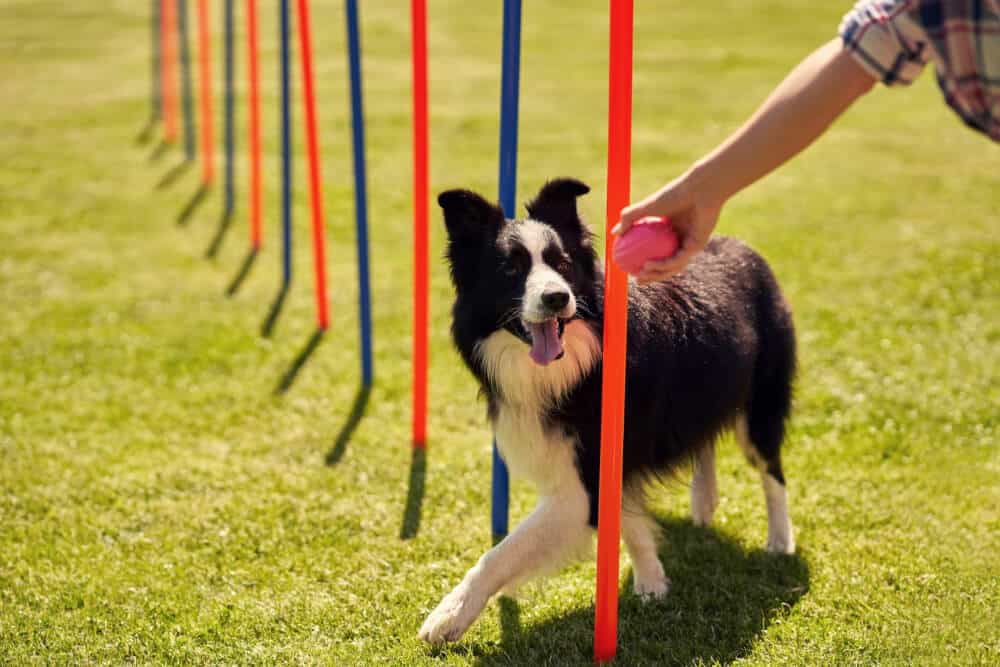Are you hoping to train your dog for an agility competition? Want to provide your four-legged companion with more physical and mental stimulation? Backyard dog obstacle courses are a great way to build trust, provide exercise, and prevent boredom. We’ve compiled some easy DIY dog obstacle courses on the cheap.
You don’t have to shell out a lot of money for state-of-the-art equipment. You can construct a safe and fun obstacle course for dogs of any size with a few inexpensive supplies — or even things you already have in your home.
DIY Backyard Agility Course for Dogs
Wherever you set up your agility course, ensure that your dog has enough room to run around and that there are no hidden dangers, for example, holes and divots in the ground that can cause injury. As long as you put your dog’s safety first, you should have no trouble making a homemade obstacle course that’s entertaining and engaging for both of you.
Let’s look at three common obstacles — jumps, tunnels, and weave poles — that you can set up for your dog. Remember, safety is the most crucial feature of any dog obstacle course, so keep your dog’s well-being in mind while setting everything up.
Jumps
What to watch out for:
When you’re building or buying a jump obstacle, ensure the bar can easily be knocked down, so your dog doesn’t hit something solid and injure himself if he doesn’t jump high enough.
When you’re building or buying a jump obstacle, ensure the bar can easily be knocked down, so your dog doesn’t hit something solid and injure himself if he doesn’t jump high enough.
How to set them up:
You can build one entirely out of inexpensive PVC pipes. Just be sure you’re setting up cups (the holders for the bar) at different increments along your upright so you can adjust the height for your dog.
You can build one entirely out of inexpensive PVC pipes. Just be sure you’re setting up cups (the holders for the bar) at different increments along your upright so you can adjust the height for your dog.
If you decide to purchase bar jumps, keep the jump’s height and width in mind — leave enough room for your dog to jump comfortably between the uprights and over the bar. It would be best if you also looked for lightweight and portable bars that you can easily deconstruct and move around in case you decide to rearrange your obstacle course or take your dog to a different outdoor space. Depending on the size of your home, you can move the homemade obstacle course indoors during inclement weather.
Tunnels
What to watch out for:
Going through an enclosed dark space can be scary for your dog the first few times, and you need to make the experience as positive as possible. The tunnel you set up should be wide enough for your dog to comfortably pass through and sturdy enough that it won’t collapse while your pup is inside it. You’ll also want a sturdy tunnel material that your dog’s nails won’t tear to shreds.
Going through an enclosed dark space can be scary for your dog the first few times, and you need to make the experience as positive as possible. The tunnel you set up should be wide enough for your dog to comfortably pass through and sturdy enough that it won’t collapse while your pup is inside it. You’ll also want a sturdy tunnel material that your dog’s nails won’t tear to shreds.
How to set them up:
Although it is possible to create an obstacle course tunnel from scratch, many people find it more accessible and much less time-consuming to repurpose an existing play tunnel. A flexible children’s play tunnel makes a great obstacle, and you can find one at most department stores and furniture outlets for around $20 to $30. The tunnel you choose should be lightweight and heavy enough that it won’t move when they run through it.
Although it is possible to create an obstacle course tunnel from scratch, many people find it more accessible and much less time-consuming to repurpose an existing play tunnel. A flexible children’s play tunnel makes a great obstacle, and you can find one at most department stores and furniture outlets for around $20 to $30. The tunnel you choose should be lightweight and heavy enough that it won’t move when they run through it.
Weave Poles
What to watch out for:
As with your bar jump, avoid hard and immovable materials that could injure your dog if he misjudges the distance between poles. However, you’ll also want to secure the rods, so they don’t fall over every time your dog runs through them.
As with your bar jump, avoid hard and immovable materials that could injure your dog if he misjudges the distance between poles. However, you’ll also want to secure the rods, so they don’t fall over every time your dog runs through them.
How to set them up:
You can easily create your weave poles by sticking lengths of PVC pipe into the ground with enough space in between for your dog to walk or run through safely.
You can easily create your weave poles by sticking lengths of PVC pipe into the ground with enough space in between for your dog to walk or run through safely.
Don’t want PVC pipes popping out all over your yard? You can also buy orange traffic cones and space them out at a safe distance. Traffic cones are bulkier than the weave poles used in agility competitions, but if you’re just casually training your dog on an agility course, they’ll work fine. If you are training your dog for an agility competition, large orange cones can also benefit them because they present more of a challenge than standard weave poles.
How to Make a Dog Agility Obstacle Course Out of Household Items
You could take your pup to the park or a training class, but why not create your doggie obstacle course at home? It’s easy – and fun – to do, and you can use everyday items around your house. Plus, it’s a great way to tire out your pup! Here are a few tips to get you started.
Ramps
You can take a large piece of plywood and a few cinder blocks to make a ramp. Ensure the ramp is secure and doesn’t shift as your pup runs up and down.
Weaving Obstacles
If you have those little orange cones sitting around? If you have candy cane sticks for Christmas decorating outside, those will work inside the cones to make weave poles. As you set up the weaving cones, you will want to ensure they are not too lightweight that they blow over when your pup runs by but not too heavy that if it falls over they get hurt. Make sure to spread the cones far enough apart so the dog can move through slowly.
Jumping Obstacles
You can make short, beginner jumps with just a laundry basket and curtain rod. Hula hoops and poodles are versatile enough to be used in obstacle courses. These items’ soft, collapsible nature makes them perfect for jumping exercises! To teach your pup to jump, start by holding up the hoop at the desired height while signaling for them to jump through.
Tunnel Obstacles
You can quickly turn an old cardboard box into a homemade tunnel by simply removing the top and bottom lids of the box. You might need additional support while your dog is going through the tunnel. If your furry friend is hesitant, try going through the box tunnel first to show your dog. Or you can leave a treat at the end of the obstacle to get him to come through.
How to Create an Indoor Dog Obstacle Course
Depending on what part of the country you live in, the weather can pose a challenge for getting your pup adequate exercise. While you might enjoy a snowy day snuggled up on the couch, a high-energy dog can quickly get bored. Creating an indoor obstacle course for your dog will give them much-needed movement and entertainment.
Using items around your home, you can design a doggie obstacle course with little effort and no additional cost.

Chair Tunnel
Line your dining room chairs back to back to create a tunnel. Please ensure they are wide enough for your pup to run through easily. You can drape a blanket over the chairs to create a more tunnel-like feel. Try putting a treat at the end for a fun reward.
Zig Zag Obstacle
This type of obstacle is a great way to train agility. Take boxes, chairs, shoes, or any object around your house to create a zig-zag pattern. For this particular obstacle, it may work better for you to lead the way through the pattern to show them how it works.
Stairs
If your home has a staircase, you have a built-in exercise opportunity. Carpeted stairs are safer for your pup, so keep that in mind. Have your dog run up and down a few times to get the blood pumping.
Step-Stool Hurdle
Grab a small step stool or a rectangular laundry basket would work. Bigger dogs should have no problem jumping over the hurdle. Train smaller dogs to jump onto the hurdle, then jump off the other side. You may need to hold the basket or stool, so it doesn’t move.
Army Crawl
Does your coffee table sit low to the ground? How about a side chair? Find something low enough to the ground that forces your dog to crawl through on its belly. Keep in mind the size of your furry friend, and you can select an object that works best.
Get Moving
Now that you have ideas to create your own DIY dog obstacle course, put it all together. You may need to use several rooms in your house depending on the size of your home. Once the indoor obstacle course is set up, get your favorite four-legged friend and try out your DIY dog obstacle course. Please let us know in the comments objects you’ve found around your home to make an obstacle course for your favorite pet.











